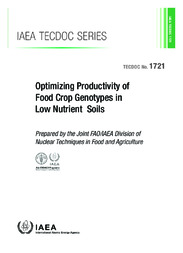Selection of green manure species for efficient absorbtion of poorly-available forms of soil phosphorus.
Selection of green manure species for efficient absorbtion of poorly-available forms of soil phosphorus.
Author(s): FRANZINI, V. I.; MENDES, F. L.; MURAOKA, T.; SILVA, E. C. da; ADU-GYAMFI, J. J.
Summary: Green manuring is an agronomic practice in which plants or their residues are added to the soil, improving of the soil physical, chemical and biological attributes, and increasing organic matter and fertility levels through nutrient cycling. It is estimated that green manures can increase P bioavailability. The integration of plant species in crop rotations to immobilize P is one of the most promising agronomic measures to improve the availability of P for the main crop. This study aimed to assess 21 species of green manure and a standard plant species (Lupinus albus) on their ability to absorb the available forms of P by the 32P isotopic dilution technique. It also aimed to determine if the isotopically exchangeable P, the L-values, differed when calculated with or without taking seed N into account. The results were statistically correlated and analyzed by hierarchical clustering (HCA) in order to group similar plant species. Jack bean was the most efficient species in P utilization while the Stylosanthes spp. were the most efficient in P uptake. The seed-derived P affected the P uptake efficiency evaluated by L-value technique.
Publication year: 2013
Types of publication: Book sections
Unit: Embrapa Eastern Amazon
Observation
Some of Embrapa's publications are published as ePub files. To read them, use or download one of the following free software options to your computer or mobile device. Android: Google Play Books; IOS: iBooks; Windows and Linux: Calibre.
Access other publications
Access the Agricultural Research Database (BDPA) to consult Embrapa's full library collection and records.
Visit Embrapa Bookstore to purchase books and other publications sold by Embrapa.

